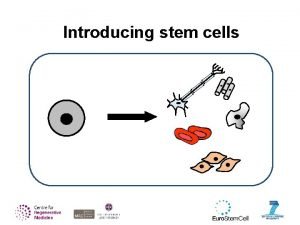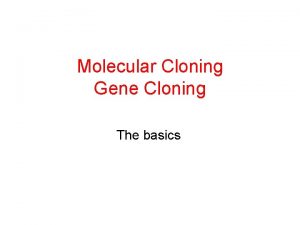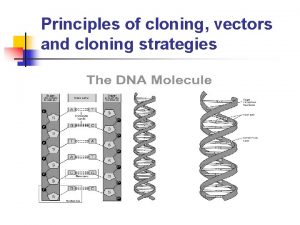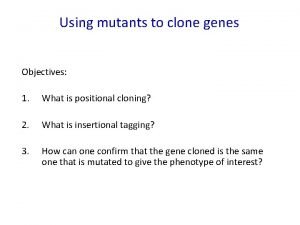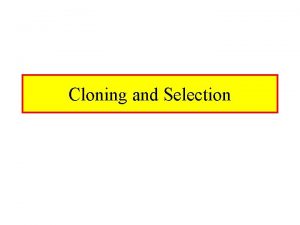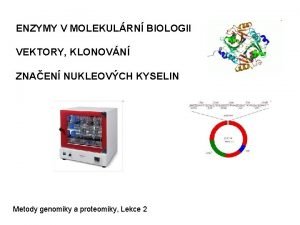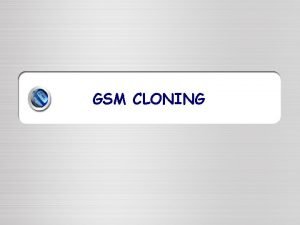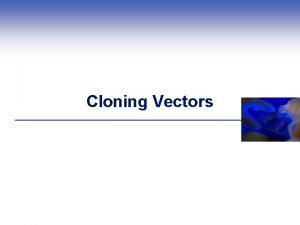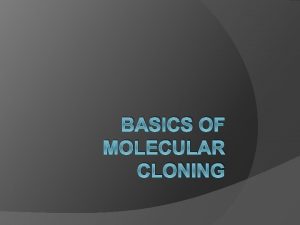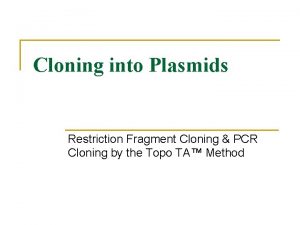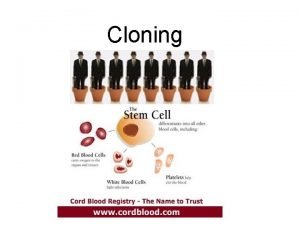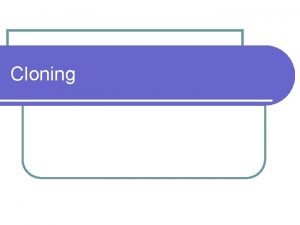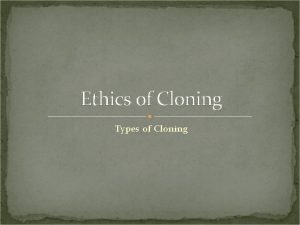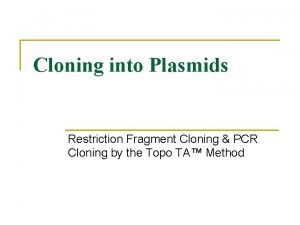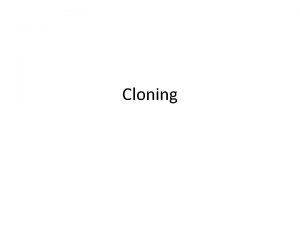Cloning Dolly What was Dolly In 1997 Dolly

















- Slides: 17

Cloning Dolly

What was Dolly? • In 1997 Dolly the sheep became the first vertebrate cloned from the cell of an adult animal. Not only was this a remarkable scientific breakthrough but it immediately gained interest and concern from around the world on the future of cloning technology as it would effect humans.

Dolly: The Cloning of a Sheep • Dolly the sheep was successfully cloned in Britain in 1996 by the scientist “Ian Wilmut” and was put down in February 2003 after developing a lung infection and arthritis. • Dolly was a genetic copy of the Finn Dorset ewe. • Her birth, more than 10 years ago showed that nuclei from specialized adult cells can be reprogrammed into all the cells of an organism. • The technique that led to Dolly is called somatic cell nuclear transfer and has remained essentially unchanged over the last decade.

What is cloning? • Reproductive cloning- The entire animal is produced from a single cell by asexual reproduction. This would allow for the creation of a human being who is genetically identical to another. • Therapeutic cloning- Broader use of the term “cloning. ” Does not create a new genetically identical individual. Research includes therapy for human mitochondria disease and others that could replace damaged or diseased tissues without the risk of rejecting another’s tissue. Could create new skin tissue for burn patients.

Other types of cloning – Multiple copies of genes or gene fragments, repeating nucleotide sequences – Single cell organisms, like bacteria and fungi. This includes fermentation processes for production of bread, beer, and wine. – Entire plant asexual replication – Natural cloning occurs in sexual reproduction, when the embryo splits in two to produce twins.

Methods of cloning – Embryo splitting- Artificially splitting a single embryo at a very early stage of development. In the natural process this would create twins. However, because this is done at an early stage and there are usually less than eight cells you can only make a few clones. Both the nuclear genes and mitochondria genes would be identical.

Methods of cloning – Nuclear replacement- Genetic material (nucleus from embryonic, fetal, or adult cell) is removed and placed into an unfertilized egg or embryo, whose nucleus has been removed. In this case the nuclear genes remain the same but the mitochondria DNA would be different. This has the potential to create the clone of an adult organism as well as many clones at once.

Dolly in detail – Dolly was cloned using the nuclear replacement method. – Again the nucleus with chromosome sets is fused with an unfertilized egg whose nucleus has been removed. – Motivating factor was that it could help to improve certain qualities in livestock. – Dolly was not the first sheep to be created from nuclear replacement. – Two genetically identical sheep, Megan and Morag were born in 1996 using the technique. The difference was that Dolly was derived from an adult sheep, and Megan and Morag were from a sheep embryo.

How to clone?

Dolly’s probability – Cells taken from a six-year-old Finnish Dorset ewe and cultured in a lab. – 277 cells then fused with 277 unfertilized eggs (each with the nucleus removed) – 29 viable reconstructed eggs survived and were implanted in surrogate Blackface ewes. – 1 gave birth to Dolly – 0. 361% chance at onset, 3. 4482% once implanted. In nature between 33 -50% of fertilized eggs develop.

Cloning Dolly • I) Enucleate the eggs produced by Scottish Blackface ewes (female sheep). – Treat the ewes with gonadotropin - releasing hormone (Gn. RH) to cause them to produce oocytes ready to be fertilized. Like all mammals, these arrested at metaphase of the second meiotic division (meiosis II). – Plunge a micropipette into the egg over the polar body and suck out the polar body and the haploid pronucleus within the egg.

• II) Fuse each enucleated egg with a diploid cell growing in culture. – Cells from the mammary gland of an adult Finn Dorset ewe (they have white faces) are grown in tissue culture. – Five days before use, the nutrient level in the culture is reduced so that the cells stop dividing and enter G 0 of the cell cycle. – Donor cells and enucleated recipient cells are placed together in culture. – The cultures are exposed to pulses of electricity to • cause their respective plasma membranes to fuse; • stimulate the resulting cell to begin mitosis (by mimicking the stimulus of fertilization).

III) Culture the cells until they have grown into a morula (solid mass of cells) or even into a blastocyst (6 days). IV) Transfer several of these into the uterus of each (of 13, in this case) Scottish Blackface ewes (previously treated with Gn. RH to prepare them for implantation). V) Wait (with your fingers crossed). • The result: one ewe gave birth (148 days later) to Dolly.


The Biotechnology of Reproductive Cloning

Dolly with her foster mother

How do we know that Dolly is not the progeny of an unsuspected mating of the foster mother? • She has a white face and the foster mother is a Scottish Blackface • DNA fingerprinting reveals bands found in Finn Dorset sheep (the breed that supplied the mammary cells), not those of Scottish Blackface sheep
 Logan stancato
Logan stancato Reproductive cloning
Reproductive cloning Genetic engineering steps
Genetic engineering steps Reproductive cloning process
Reproductive cloning process What is cloning
What is cloning Steps of gene cloning
Steps of gene cloning Identity cloning and concealment
Identity cloning and concealment Gene cloning process
Gene cloning process Clonaid
Clonaid Inverse pcr
Inverse pcr Pixpsd
Pixpsd Suspension cloning
Suspension cloning Topo ta cloning
Topo ta cloning Cloning vector
Cloning vector Cloning in nature
Cloning in nature Gene cloning
Gene cloning Gsm cloning
Gsm cloning Advantages and disadvantages of cloning
Advantages and disadvantages of cloning

